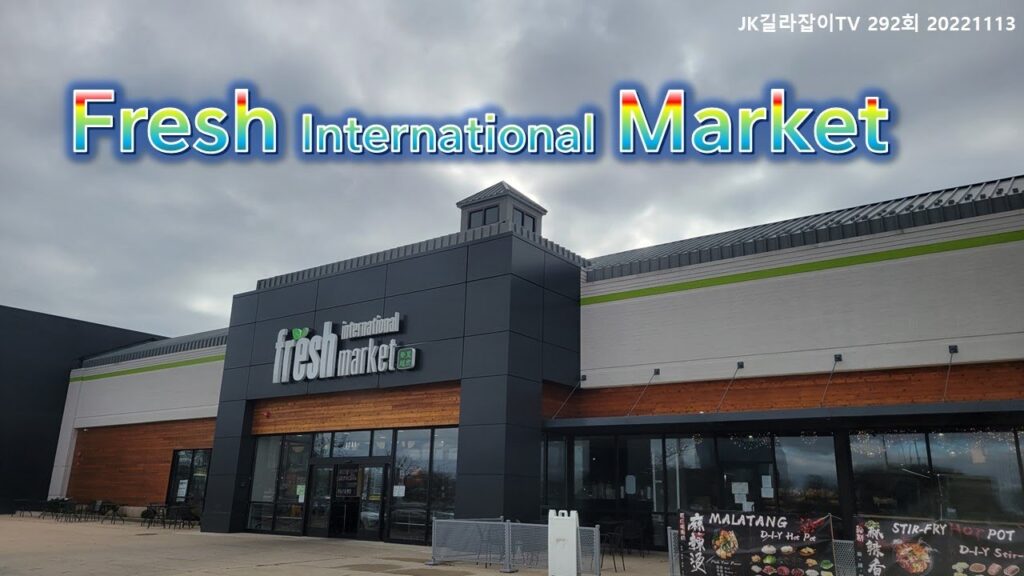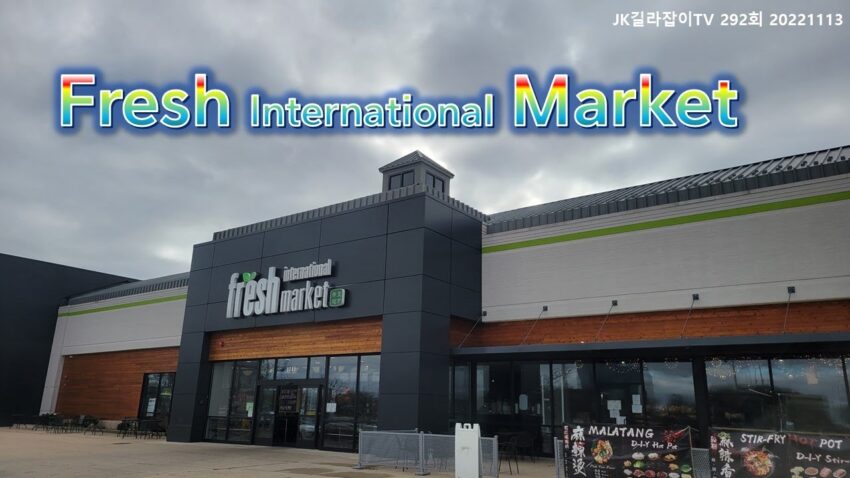
Navigating the Fresh Foods International Market: Trends, Challenges, and Opportunities
The fresh foods international market is a dynamic and ever-evolving landscape, characterized by increasing globalization, shifting consumer preferences, and technological advancements. Understanding the key trends, challenges, and opportunities within this market is crucial for businesses looking to expand their reach and maintain a competitive edge. From sourcing high-quality produce to navigating complex supply chains, the fresh foods international market presents both exciting possibilities and significant hurdles.
Current Trends Shaping the Fresh Foods Market
Several key trends are currently shaping the fresh foods international market. One of the most prominent is the growing demand for organic and sustainably sourced products. Consumers are increasingly aware of the environmental and health impacts of their food choices, leading them to seek out options that are both good for them and good for the planet. This trend has spurred significant growth in the organic produce sector, with many international markets experiencing double-digit growth rates. [See also: Sustainable Agriculture Practices for Global Food Security]
Another significant trend is the rise of e-commerce and online grocery delivery services. The convenience of online shopping has transformed the way consumers purchase fresh foods, particularly in urban areas. This shift has created new opportunities for producers and retailers to reach a wider audience, but it has also presented challenges in terms of maintaining product freshness and managing logistics. The fresh foods international market is seeing a surge in specialized packaging and cold chain logistics to cater to this growing online demand.
Furthermore, the increasing focus on food safety and traceability is driving changes in the industry. Consumers want to know where their food comes from and how it was produced. This demand for transparency has led to the adoption of advanced technologies such as blockchain and IoT sensors to track products throughout the supply chain. The ability to trace the origin and journey of fresh foods builds consumer trust and ensures product integrity in the international market.
Challenges in the Fresh Foods International Market
Despite the numerous opportunities, the fresh foods international market also faces several significant challenges. One of the most pressing is the complexity of global supply chains. Sourcing fresh produce from different countries involves navigating a complex web of regulations, transportation logistics, and cultural differences. Disruptions in the supply chain, such as extreme weather events or geopolitical instability, can have a significant impact on the availability and price of fresh foods. [See also: Mitigating Risks in Global Food Supply Chains]
Another challenge is the perishable nature of fresh foods. Unlike processed foods, fresh produce has a limited shelf life, which requires careful handling and storage throughout the supply chain. Maintaining the cold chain – the uninterrupted refrigeration of products from farm to consumer – is essential to prevent spoilage and ensure product quality. This can be particularly challenging in developing countries where infrastructure may be lacking. The fresh foods international market requires investment in robust cold chain infrastructure.
Moreover, compliance with international food safety standards is a critical challenge. Different countries have different regulations regarding pesticide residues, food additives, and labeling requirements. Businesses must ensure that their products meet the standards of each market they operate in, which can be a complex and costly undertaking. Staying up-to-date with evolving regulations is vital for success in the fresh foods international market.
Overcoming Logistical Hurdles
The transportation of fresh foods across borders presents unique logistical hurdles. Maintaining optimal temperature and humidity levels during transit is crucial to prevent spoilage and maintain product quality. This requires specialized refrigerated containers and transportation equipment. Additionally, customs clearance procedures can be time-consuming and complex, potentially delaying shipments and affecting product freshness. Efficient logistics management is paramount in the international market.
Navigating Regulatory Landscapes
The regulatory landscape for fresh foods varies significantly from country to country. Understanding and complying with these regulations is essential for businesses operating in the international market. This includes labeling requirements, pesticide residue limits, and import/export restrictions. Failure to comply with these regulations can result in fines, product recalls, and reputational damage. Expert legal counsel and regulatory compliance specialists are valuable assets.
Opportunities for Growth in the Fresh Foods Market
Despite the challenges, the fresh foods international market offers numerous opportunities for growth. One of the most promising is the expansion into emerging markets. As incomes rise in developing countries, consumers are increasingly demanding higher-quality, healthier foods, including fresh produce. This presents a significant opportunity for businesses to expand their reach and tap into new markets. [See also: Emerging Market Opportunities in the Food Industry]
Another opportunity lies in the development of innovative packaging and preservation technologies. Extending the shelf life of fresh produce can reduce waste and improve the efficiency of the supply chain. Technologies such as modified atmosphere packaging (MAP) and edible coatings can help to preserve the quality and freshness of fruits and vegetables during transit and storage. Innovation is key to success in the fresh foods international market.
Furthermore, the increasing focus on sustainability is creating opportunities for businesses that prioritize environmental responsibility. Consumers are increasingly willing to pay a premium for products that are produced in an environmentally friendly manner. By adopting sustainable farming practices and reducing their carbon footprint, businesses can differentiate themselves and attract environmentally conscious consumers. The fresh foods international market is rewarding sustainable practices.
Leveraging Technology for Efficiency
Technology plays a crucial role in optimizing the fresh foods international market. From precision agriculture techniques that enhance crop yields to advanced supply chain management systems that improve efficiency, technology offers numerous opportunities to enhance productivity and reduce costs. Data analytics can also be used to predict demand, optimize inventory levels, and minimize waste. Embracing technology is essential for staying competitive.
Building Strong Supplier Relationships
Strong relationships with suppliers are essential for success in the fresh foods international market. Building trust and collaboration with farmers and producers can ensure a consistent supply of high-quality produce. This includes providing fair prices, offering technical assistance, and investing in long-term partnerships. A reliable supply chain is the backbone of any successful business in this industry. The fresh foods international market thrives on strong partnerships.
The Future of Fresh Foods in the Global Market
The future of the fresh foods international market looks promising, driven by increasing consumer demand for healthy, sustainable, and convenient options. As technology continues to advance and global supply chains become more efficient, the industry is poised for continued growth. However, businesses must be prepared to adapt to changing consumer preferences, navigate complex regulations, and embrace sustainable practices to succeed in this dynamic and competitive market. The fresh foods international market is constantly evolving.
In conclusion, navigating the fresh foods international market requires a deep understanding of current trends, challenges, and opportunities. By embracing innovation, prioritizing sustainability, and building strong relationships with suppliers, businesses can position themselves for success in this exciting and rapidly growing industry. The key is to remain agile, adaptable, and committed to delivering high-quality, safe, and sustainable fresh foods to consumers around the world. The fresh foods international market presents a world of possibilities for those who are prepared to meet its challenges and capitalize on its opportunities.
The fresh foods international market is also influenced by the constant innovations in packaging and preservation techniques. Modified atmosphere packaging, active packaging, and even edible coatings are being developed to extend shelf life and maintain the quality of fresh produce during transportation and storage. These advancements not only reduce waste but also enable businesses to reach more distant markets. Furthermore, cold chain technologies are becoming more sophisticated, with real-time temperature monitoring and control systems ensuring that products remain within optimal temperature ranges throughout the supply chain. This technological advancement is vital for maintaining the integrity of fresh foods in the international market. The fresh foods international market benefits greatly from these technologies.
